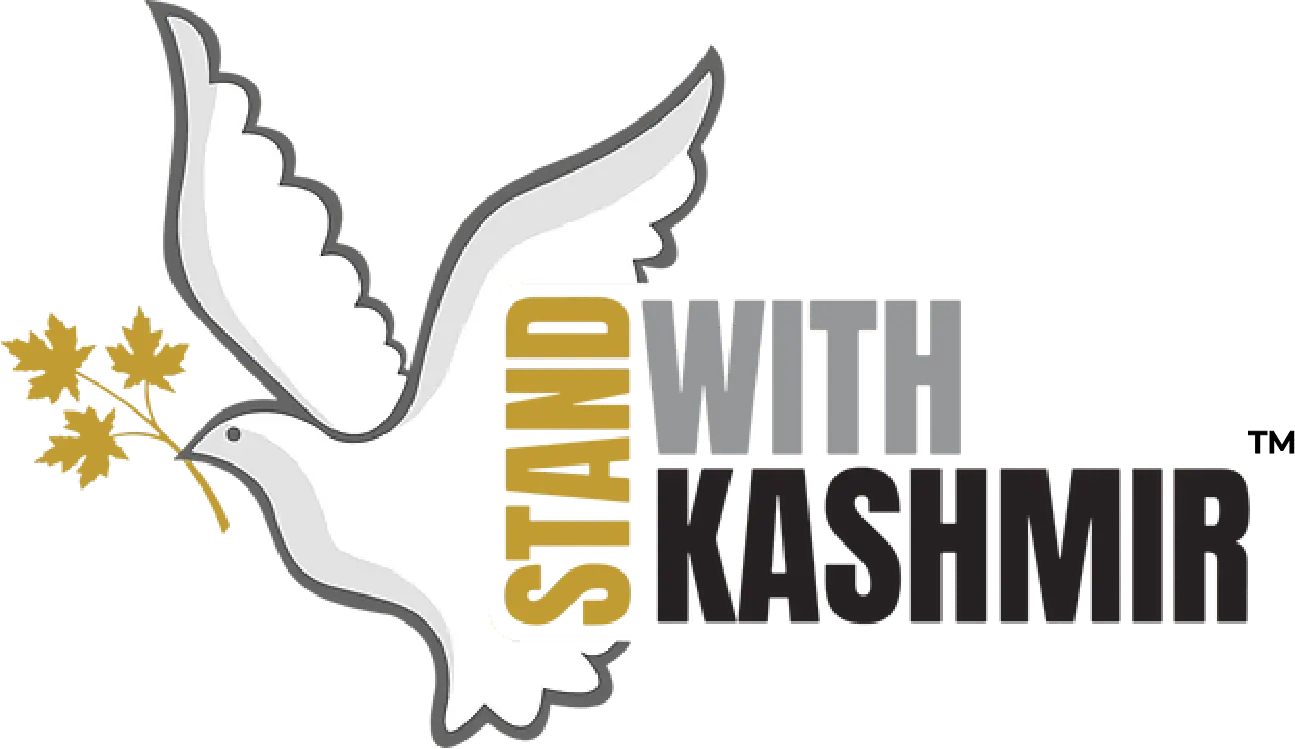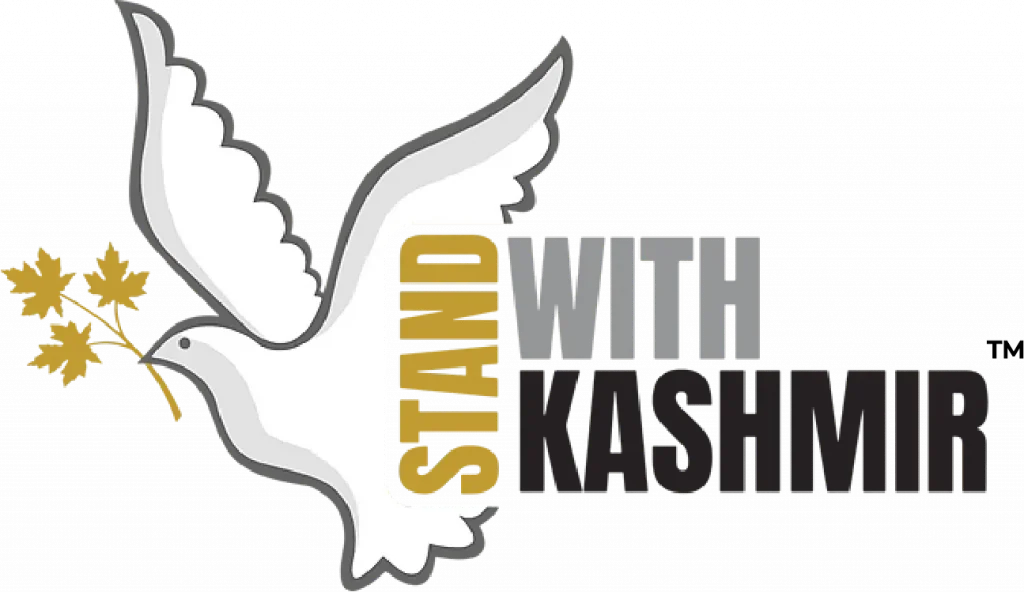INTRO TO KASHMIR
Kashmir is a Himalayan region that refers to the former princely state of Jammu and Kashmir before 1947 and the Partition of the Indian subcontinent. It is renowned for its exceptional beauty and natural resources, food, music, art, and architecture. While the region is majority Muslim, it is also home to Hindus, Buddhists, and Sikhs, as well as diverse linguistic and ethnic communities.
As a result of regional wars, Kashmir has been divided between:
India: consisting of the Kashmir Valley, Jammu, and Ladakh
Pakistan: consisting of Azad Kashmir and Gilgit-Baltistan or the Northern Areas
China: Aksai Chin
While all parts of the former princely state have a right to self-determination, our work is centered on Indian-occupied Kashmir, which remains the most militarized zone in the world and is currently undergoing a settler-colonial project.
The historical case for Kashmiri self-determination goes back not just to the year 1947, when the Indian subcontinent was partitioned, but to the year 1931, when Kashmiris began a mass movement against the Dogras, their autocratic princely rulers.
This means that Kashmiri struggles for freedom and just rule predated the creation of India and Pakistan. The Dogras were a Hindu supremacist state that ruled over Muslim-majority Kashmir from the mid-nineteenth to the mid-twentieth century during the period of British colonial rule. During the 1931 mass movement, Kashmiris called for more representative government and better economic and educational opportunities, especially for the region’s Muslims, who were seen as being economically, socially, and politically marginalized.
As Kashmiris began to demand an end to Dogra rule in the period of decolonization, their struggle became entangled with the political developments surrounding Partition.
In 1947, as a princely state, the ruler of the state of Jammu and Kashmir had the option of acceding to either of the two dominions, Hindu-majority India or Muslim-majority Pakistan.
As he vacillated, an uprising in the region of Poonch by Jammu Muslims against the Dogra ruler led to an ethnic cleansing of Muslims in Jammu by the Dogra state army and Hindu supremacist militias. Pathan Muslims from what became northwest Pakistan joined the rebels to liberate Kashmir’s Muslims from their Dogra overlords. In the face of the rebellion, the Dogra Maharaja requested military assistance from the Government of India.
The Government of India agreed to do so only if the Dogra Maharaja signed a treaty of accession, which gave India control over the foreign affairs, defense, and communications of the region. Scholars have argued that the Indian army was already in Kashmir even before the treaty was signed, marking their presence as an invasion. Others have argued that the Maharaja had effectively lost control of the territory and did not have the right to make agreements on behalf of the people. Nonetheless, the treaty promised that the state’s future would be determined “by a reference to the people.”
Both India and Pakistan went to war in 1948, resulting in Indian occupation of two-thirds of the former princely state, while the remainder was controlled by Pakistan. The line that divides the two parts of Kashmir was initially called the cease-fire line; today, it is referred to as the Line of Control.
In 1948, India took the dispute to the United Nations, which called for a plebiscite in the region once hostilities had ceased under UN Security Council Resolution 47. The plebiscite resolution only calls for an option to merge with either India or Pakistan; in recent decades, some Kashmiri political formations have been calling for the option of independence.
The plebiscite has never taken place, and this remains the root of the issue, even more than seventy years later. Kashmiri social movements throughout this time have demanded a right to determine their political future, something promised to them by the international community. This is in direct contrast to the Indian state’s narrative of Kashmir being an “integral part” of India, and Kashmiris being “separatists.” Kashmir never belonged to India: it was illegally occupied, annexed, and colonized.
Indian occupied Kashmir was treated as a colonial outpost of the metropole in Delhi.
Corrupt governments were installed in the state to secure the accession for India and quell pro-Pakistan or pro-independence sentiments in the region.
Through these local governments, India eroded Kashmir’s political, economic, and judicial autonomy, which had been promised in Article 370 of the Indian constitution, resulting in even greater unrest.
Most of the local elections were rigged, and the election machinery would not allow oppositional parties to contest. India claimed that these elections meant that there was no need for a plebiscite, as Kashmiris had given their consent to Indian rule. Rulers that had served their political purpose were unceremoniously removed and new governments were installed at the whim of the Indian government.
The state also became increasingly dependent on its fiscal ties with India which provided much of the budget to run its socio-economic programs and restricted Kashmiri economic self-sufficiency.
Kashmir’s natural resources were extracted for use in the metropole. Amidst intense local repression, demands for a plebiscite to determine the future of Kashmir were sidelined throughout the second half of the twentieth century.
In the late 1980s, after a rigged election and decades of the denial of their political rights, Kashmiris led a mass uprising against Indian rule. A number of Kashmiris also engaged in an armed struggle against the Indian state. Pakistan provided support to these groups. The Indian state responded brutally to the uprising by bringing in over half a million soldiers and completely militarizing the region. The 90s were dotted with a series of massacres. India also managed to quell the uprising by unleashing a vicious counter-insurgency group of renegade militants called the Ikhwan.
Indian occupation forces continue to exert large scale, documented, and unpunished war crimes in Kashmir.
Till date, nearly 100,000 have been killed. 8,000 have disappeared—meaning to this day, no one knows of their whereabouts. Countless women have been raped, including the gang rape of women in the villages of Kunan Poshpora by Indian forces in 1991. A number of mass graves have been discovered. Thousands of Kashmiris have been tortured and arbitrarily detained.
During the armed rebellion over half a million Indian armed forces, including soldiers and para-military, became part of the permanent landscape of the region. Today, the region is the most militarized place on earth. India’s armed forces operate in a state of impunity and are protected by laws such as the Armed Forces Special Powers Act and the Public Safety Act, which allows the state to arrest anyone for long periods of time without any due process.
The uprising also led to the departure of a vast majority of Kashmir’s Hindu minority, the Pandits, many of whom lived in camps in Jammu or other cities in India. The reasons for their departure are deeply contested. As a result, relations between Kashmiri Muslims and Kashmiri Pandits have been increasingly communalized in recent decades, as Indian statecraft has relied upon policies of divide and rule between various communities in Kashmir.
Although the armed rebellion was effectively quashed by the early 2000s, by 2008, it gave way to mass mobilizations and civil disobedience by a generation that has come to age under the gun.
Since 2008, an entire generation of Kashmiri youth have taken on the Indian state, both online, and on the streets.
Dubbed by analysts as the “new intifada,” Kashmiri youth protest the Indian occupation and the lack of political self-determination.
Initially, the protests were peaceful, as large crowds gathered to protest fake encounters, land transfers, human rights violations, and cases of sexual violence, demanding an end to the occupation and the right to a plebiscite to determine Kashmir’s future.
As the protests grew in momentum, the Indian state responded brutally, firing live ammunition and pellet guns into crowds, arresting political leaders and youth activists, and oftentimes, declaring shoot-on-sight curfews in the region in order to prevent further protests from occurring.
Indian state brutality led to the phenomenon of kani jang, or stone throwing, as well as new recruits to the armed rebellion. State repression and violence has increasingly gotten worse under the current Modi government, as Kashmir shifts from an occupied territory to one that is becoming a settler-colony, on the verge of demographic change.
©2025 StandWithKashmir All rights reserved. SWK is a 501(c)(3) non-for-profit organization.

